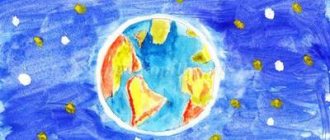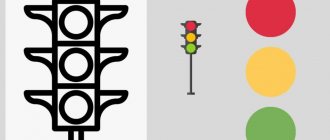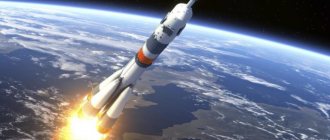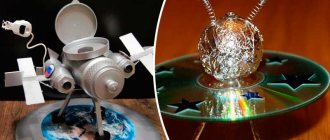Moon
The moon that shines in the sky at night is a satellite of our planet. By cosmic standards, it is very close to us, just 3 days away on a rocket. The Moon rotates around the Earth counterclockwise.
We see it only at night, since during the day the Sun eclipses it with its light, and it is always of a different shape, or rather visible to us. Each form has its own phase: new moon, crescent of the waxing moon, first quarter of the waxing moon, waxing moon, full moon and then decreasing: waning moon, quarter of the waning moon, crescent of the waning moon, new moon again.
Meteorites
Meteorites are pieces of celestial bodies, usually made of stone and iron, that fell to our Earth. They are of great value for science. After all, this is literally a piece of space. Scientists from all countries are trying to study these bodies as fully as possible.

Meteorites come in different sizes: from small stones to large boulders. The places where they fell can turn into craters.
Sometimes entire meteor showers occur - the fall of hundreds and thousands of meteorites in a limited sector of the sky. The largest meteorite ever discovered on earth, weighing 100,000 tons, is currently located in West Africa's Aidar Desert. Most often, only very small meteorites, whose weight ranges from several grams to kilograms, reach the surface of our planet, protected by a reliable shield of the atmosphere.
Quasars
A quasar is a cosmic object that releases a huge amount of energy. They are the brightest and most distant “residents” of the Universe from us.
Space is an endless space with millions of different galaxies, planets and stars that have not been fully studied by scientists. Scientists who study space are called astronomers. Previously, people did not really know anything about space, but gradually they studied it and made discoveries.
The famous astronomer and scientist Nicolaus Copernicus proved that our Earth and other planets move around the sun. Another scientist, Isaac Newton, determined why the planets move around the sun and do not fall. Step by step, people all over the world are becoming familiar with the secrets of space, which will last for many centuries.
Just the main thing
What can you tell us about space? First of all, learn to observe! If we look at the sky at different times of the day, we will see the sun, moon and stars. What is it? All these are space objects. The vast universe consists of billions of cosmic objects. Our planet Earth is also a space object; it is part of the solar system.
The system has this name because its center is the Sun, around which 8 planets move: Mercury, Venus, Earth, Mars, Jupiter, Saturn, Neptune and Uranus. The path they take around the Sun is called an orbit.

Planet Earth
The only planet on which there is life at the moment is our Earth. The main difference between the Earth and other planets is the presence of water - the source of life and the atmosphere, thanks to which the Earth has the air that we breathe.
We learned a lot of fascinating things about planet Earth thanks to the adventures of Chevostik in his time. There are also visual experiences and experiments. For more details, read the article “Planet Earth. Travels with Chevostik."
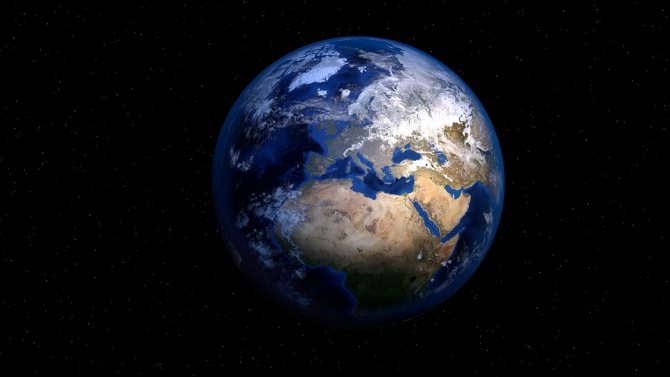
We talk about our universe with the help of experiments
With the help of simple but effective experiments, it will be easier for you to explain to your child what space is. Below we present for you a small selection that your child will definitely like and help him understand.
Why don't we always see the full moon?
We take an ordinary table lamp and a ball. Rotate the ball so that, depending on the lighting, you can also see the full ball and only part of it in the form of a crescent. It's so easy to explain that we only see the illuminated part of the moon in the sky.
How a rocket flies
A very visual experiment with a balloon that will show your child the basic principle of a rocket taking off. We take a balloon, inflate it by hand, squeeze it with our finger, and then suddenly release it. The ball flies up, and when the air in it runs out, it falls. This is how a rocket flies. The only difference is that instead of air it has fuel, so during takeoff you can see fire and clouds of smoke.
The rocket consists of several parts. After takeoff, when the fuel runs out, the first part is disconnected, the engine of the second part is started, after the fuel is used up, it is also disconnected, and only one small, lightweight third part with the cosmonaut cabin goes into orbit.
You can watch how to make a rocket using the origami technique in the video on our channel “Rainbow Workshop”:
Stars
Stars are hot balls of gas of different sizes, consisting of hydrogen molecules. They only seem so small to us, because they are at a very far distance from us.
Clusters of stars form constellations. They were given names by our ancestors, who mentally connected the stars with each other and saw certain figures in them. Instruments for studying – telescopes – help us see them closer.
You can learn about what stars and constellations are, what they are like, what they have in common with humans and what their character is by watching this short video:
Asteroids
An asteroid is a rocky celestial body that has an irregular shape and varies in size: from a grain of sand to many kilometers of boulders. Due to the complete absence of gravity, asteroids cannot acquire a spherical shape, and therefore more closely resemble shapeless stones.
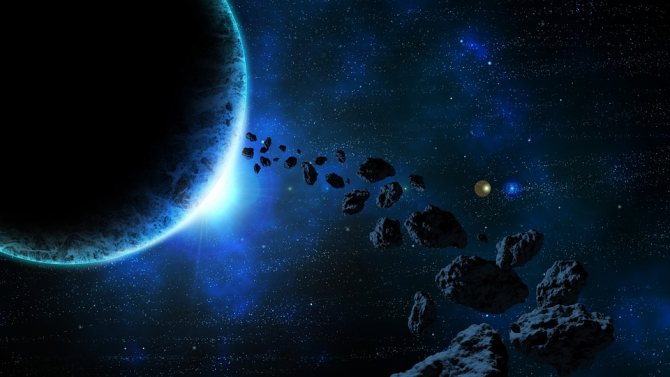
Asteroids are composed of iron, nickel, cobalt, oxygen, titanium, hydrogen and other elements. Asteroids can have craters and even satellites. And between Mars and Jupiter a whole asteroid belt formed. It’s very interesting about him and more, Smeshariki says:
Sun
The sun is also a star, only very hot and very large. Around it, as we found out, other planets, including the Earth, are circling. We feel the warmth of the sun and see it so well because it is very close to the Earth.
Thanks to the Sun, seasons change on planet Earth. We know what hot and cold are

Space is limitless. Our entire endless solar system is just a particle in the Universe. In it and throughout space there are also such space objects as:
Other planets of the solar system
The rest of the planets are no less interesting and alluring. The largest planet is the mighty Jupiter. And Saturn is famous for its giant rings, visible to us from Earth. Mars is the first planet to attract the attention of man back in Ancient Egypt. Because of its fiery red color, ancient people associated Mars with the god of war. The planet Venus is the only one that has a “female” name. She received it thanks to her brightness. In ancient times it was considered the brightest planet.
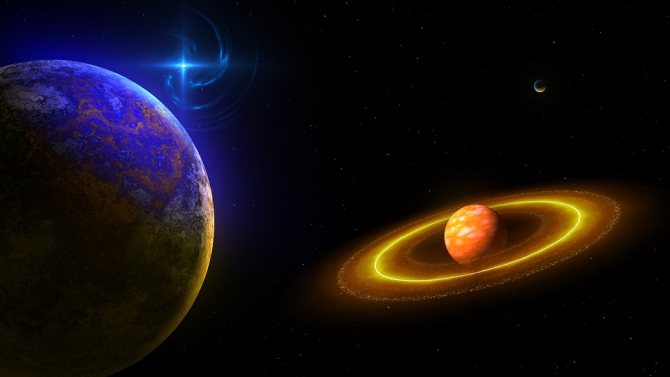
While studying poems about Space, my son and I fell in love with this little counting rhyme that helps us remember the names and order of the planets:
An astrologer lived on the Moon. He kept track of the planets: MERCURY - one, VENUS - two, three - EARTH, Four - MARS, Five - JUPITER, Six - SATURN, Seven - URANUS, Eight - NEPTUNE, Nine - the farthest PLUTO, Who If he doesn’t see it, get out!
(Ya. Akim)
Is Pluto not a planet?
It is also worth noting that until 2006, the world community identified 9 planets in the solar system. However, due to Pluto’s failure to meet one of the definitions of planets, it was recognized as a dwarf planet and “excluded” from the list of planets of the solar system.
Points that determine that a cosmic body is a planet:
- The object must orbit the Sun - And Pluto passes through.
- It must be massive enough to ensure a spherical shape with its gravitational force - And here everything seems to be in order with Pluto.
- It must not be a satellite of another object. Pluto itself has 5 moons.
- It should be able to clear the space around its orbit from other objects - Aha! This is the rule that Pluto breaks, this is the main reason why Pluto is not a planet. (Source)


